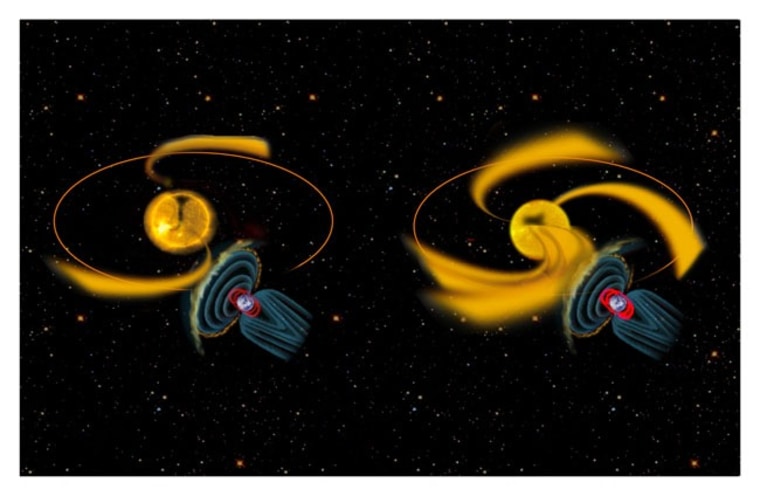Just looking at the number of sunspots doesn't provide a full picture of how the sun's solar energy impacts Earth, a new study suggests. The findings contradict previous thinking about how the sun behaves during low points in its solar cycle.
"What we're realizing is that the sunspots do not tell the whole story," said Sarah Gibson, a scientist from the National Center for Atmospheric Research (NCAR) in Boulder, Colo.
Sunspots are areas of concentrated magnetic activity that appear as dark dots on the sun's surface. The number of spots periodically rises and falls in what has become known as the solar cycle. This cycle lasts about 11 years, taking roughly 5.5 years to go from "solar minimum," or a period of time when there are few sunspots, to the cycle peak, or "solar maximum," during which there are many sunspots.
During cycle peaks — the next one is expected in 2013 — there are frequent solar flares and geomagnetic storms, events that send out radiation that can bombard the Earth's atmosphere, damaging satellites and disrupting power grids. Scientists say that a really bad solar storm, akin to one that started fires along telegraph lines in 1859, could bring modern society to its knees.
Conversely, cycle minimums were thought to be very quiet times, periods when the Earth would not experience as many blasts of solar energy. But Gibson's study shows that this is not necessarily the case.
Full force in 2008
Gibson and her colleagues compared measurements from two different cycle minimums — one from 1996 and one from 2008. They analyzed a type of solar energy called the solar wind — streams of charged particles that accelerate out from the sun's extremely hot atmosphere. The solar wind, unlike short-lived solar storms, streams from the sun pretty much constantly but with varying intensity.
They found that, while the solar winds intersecting the Earth largely disappeared in 1996, they continued to hit the Earth at full force in 2008.
These results show that "what we thought was a typical solar minimum wasn't, and what we're seeing now is a different animal," Gibson said.
Scientists previously thought that during solar minimums, solar winds would simply blow out the top and the bottom of the sun, and not come out near the equator. Since the Earth is close to the same latitude as the sun's equator, it shouldn't experience much solar wind during a low point in the solar cycle.
"If you imagine holding a hose and you hold it straight up, you would spray up, and if you had a friend standing nearby, they might get a little wet, but not soaked," Gibson said. But during the current solar minimum in 2008, the fire hose was still pointing at the Earth.
"The last two solar minimum, this didn't happen. When the sun spots went away, these fire hoses went away too," she said.
In fact, the solar wind's effect on the Earth's radiation belt — a ring of charged particles around the planet — was three times greater in 2008 than in 1996. While the effects of solar winds aren't as drastic as those of a solar flare, they can still interfere with satellite orbits and radio communications.
Changing as you read this
This year, the solar winds are starting to taper off. However, Gibson was surprised that the reduction of winds lagged so far behind the decrease in sunspots.
What could account for this difference in minimums? Gibson thinks it may have something to do with the fact that this cycle's minimum has been historically wimpy — there were fewer sunspots during this minimum than during any minimum in the last 75 years.
"In a minimum when you have a really strong polar field, it can clamp down everything else at lower latitudes down towards the equator, and really the only action is what's coming out the poles, and you get what we thought was a classic solar minimum picture, and you don't get any wind escaping," Gibson said. "But because we have such a weak magnetic field this cycle compared to last cycle minimum ... the polar field is not as strong, it can't clamp down, and stuff kind of escapes, you get these streams that squirt out at lower latitudes near the equator instead of just at the poles," she said.
Scientists are trying to learn more about the solar cycle to understand why it occurs and what accounts for cycle differences.
The solar cycle is "something that's become very important to understand in the space age because we have all these satellites, we have astronauts out there, and you have to know what space whether they're likely to face," Gibson said.
The study was led by Gibson, and the research team included scientists from NCAR's High Altitude Observatory, the University of Michigan, NOAA and NASA. The results will appear this week in the Journal of Geophysical Research. The research was funded by NASA and the National Science Foundation.
